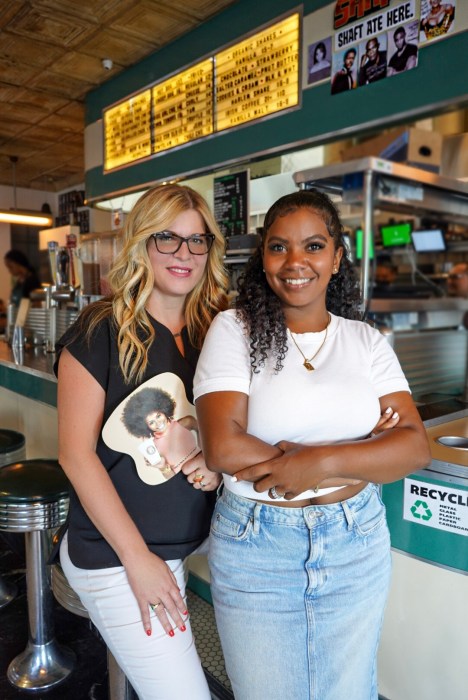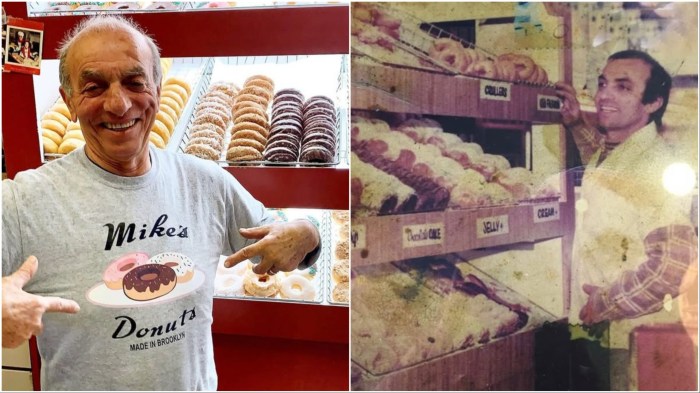
Chickpeas are having a moment. From chickpea pasta to flour to rice, what has been a staple of Indian and Mediterranean cuisine is being enthusiastically embraced by American appetites. Whether providing gluten-free and vegan alternatives for those with dietary restrictions, presenting healthier dessert options, or just offering a delicious, nutty taste that can be molded into a variety of textures, it’s safe to say that chickpeas are here to stay.
In New York, there are many restaurants and chains that utilize chickpeas as their staple ingredient — there are a wide variety of Middle Eastern, Indian and hummus-centric Mediterranean joints — but a few, like the pasta and rice experiments, are using the legume in a very different way. With chickpeas, almost any recipe is possible.
For example, at The Hummus & Pita Co., owner Dave Pesso’s family inspired him to go quite out of the box. The fast-casual Chelsea eatery was first opened in 2012 by Pesso, along with his mother and sister. The family wanted to bring their cultural flavors to a larger audience, as Pesso’s father is Greek and his mother is Eastern European and Israeli. They always planned on expanding (which they have now done with seven locations in New York and beyond), so they wanted to have more American-ized branding.
“What’s the Middle Eastern/Mediterranean version of American classic combos like bread and butter, or bagel and cream cheese? Hummus and pita!” Pesso said of coming up with the name.

The regular fare at Hummus & Pita Co. involves choosing your base (pita, laffa, bowl or greens), adding a protein (including falafel, gyro, Turkish meatballs and more) and adding sides like Moroccan beans, baba ganoush, Israeli salad and others. Chickpeas were always a main component (falafel, chickpea salad, hummus), but Pesso wanted to experiment in the kitchen with a hummus-inspired dessert.
His daughter loves chocolate — mousse and Nutella particularly — so Pesso first came up with the “Chickpea Smear,” a chickpea dessert spread that now comes in flavors like cookie dough, cake batter and of course, chocolate. It is most popularly ordered with cinnamon-sugar fried pita pieces, or on its own with a spoon.
He later expanded with the “Chickpea Chiller” (formerly called the “Hummus Shake”) which they released last year and had spent eight months perfecting.
The healthy “milkshake” — made with chickpeas (yes, chickpeas), tahini, frozen banana, almond milk, dates, vanilla and cinnamon — is gluten-free, dairy-free and vegan, appealing to a large audience. Now it comes in seven flavors: original, strawberry, chocolate, butter pecan, cold brew coffee, pistachio, and toasted almond, as well as seasonal kinds (such as pumpkin spice in the fall). This year they’re adding macaroons to the menu, which utilize chickpea water (aquafaba) that whips up into a meringue texture.

“We wanted to make it as clean and as natural as possible,” Pesso said of the shake. “The main ingredients of hummus are chickpea and tahini — they also have the best effects, health-wise — so we started with that and played with it a lot. We had to get the right texture, had to figure out the sweetness — which we got with beautiful, big medjool dates. It took a while, but once we perfected it, that was it.”
The famed Momofuku Group has added unique chickpea dishes at two of its restaurants, and it all started with cultural influences, as well. Both items contain chickpea hozon, which was invented in its culinary lab, a research kitchen “dedicated to exploring culinary traditions and understanding the origins of flavor.” Hozon is a fermented, stone-ground seasoning made in the style of miso paste — but instead of soybeans, nuts, seeds and legumes are fermented and then ground into a smooth texture.
The chickpea hozon adds a bit of sweetness and lightness to the paste, which is why it is used in both chickpea noodles at Kāwi in Hudson Yards, and in chickpea soft serve at Noodle Bar in Columbus Circle. It can be purchased directly from Peach Mart, also in Hudson Yards.
The noodles mimic a traditional Korean dish popular in the summer months: noodles in a cold soybean sauce. Chef Eunjo Park’s creative variation uses cooked chickpeas blended with chickpea hozon, lemon juice, sesame oil, lemon oil, soy sauce, pine nuts and peanuts into a sauce that is served over chilled chewy noodles tossed with spinach, oyster mushrooms and spring pea salad.

The chickpea soft serve, on the other hand, blends the hozon directly into soft serve ice cream and is topped with puffed rice.
Peacefood Cafe, the popular vegan eatery, was way ahead of the trend. They’ve had their famous “Chickpea Fries” on the menu since they opened 10 years ago, and it’s one of their biggest hits.
“The founder Eric (Yu) likes Indian food and after he became vegan in 2006, he wanted to create an India-inspired finger food,” explained co-owner Pete Lu. “It has been one of our most popular dishes.”
The dish has Indian spices and is paired with their Asian-fusion dipping sauce, a combo that has won vegan cooking awards.
“Chickpeas are a great choice from the legumes family for a vegan diet, and they are used in many Mediterranean and Middle Eastern foods,” he continued. “So it was naturally a good vegan ingredient — it’s as versatile as it is healthy.”





































